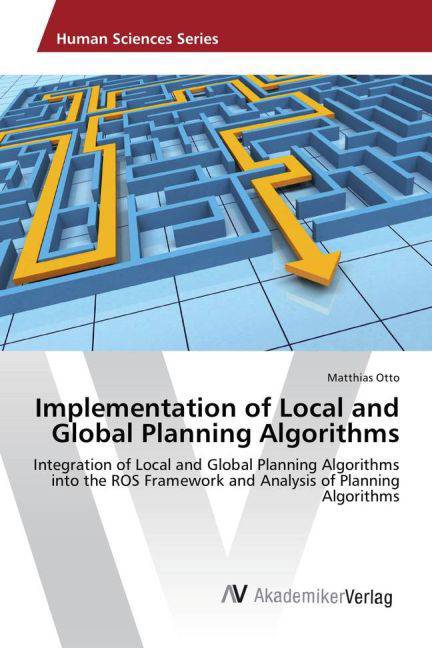
- Afhalen na 1 uur in een winkel met voorraad
- Gratis thuislevering in België vanaf € 30
- Ruim aanbod met 7 miljoen producten
- Afhalen na 1 uur in een winkel met voorraad
- Gratis thuislevering in België vanaf € 30
- Ruim aanbod met 7 miljoen producten
Implementation of Local and Global Planning Algorithms
Integration of Local and Global Planning Algorithms into the ROS Framework and Analysis of Planning Algorithms
Matthias Otto
Paperback | Engels
€ 34,95
+ 69 punten
Omschrijving
In last few years assistive wheelchairs or autonomous robots have become more important. This work deals with an autonomous indoor navigation system for a wheelchair, especially with local path planning. In particular, it is concerned with the different types of trajectories. For this wheelchair, a type with high driving comfort is required. Achieving this objective involves the usage of a clothoid as trajectory. In the course of this work, three different types of clothoids will be explained and discussed. For the high-level navigation, a modified Dijkstra algorithm is used. Further, the implemented system will be compared to the internal navigation system of the ROS framework. Thereby, the focus of the analysis is to show the impacts of the global planning on the local planning. Additionally, situations are shown, where the wheelchair could not move on without threatening the patient. The analysis furthermore focuses on the speed, the dynamic behaviour as well as the time taken for reaching the target. Based on this knowledge a conclusion about the driving comfort can be made.
Specificaties
Betrokkenen
- Auteur(s):
- Uitgeverij:
Inhoud
- Aantal bladzijden:
- 96
- Taal:
- Engels
Eigenschappen
- Productcode (EAN):
- 9783639868586
- Verschijningsdatum:
- 5/11/2015
- Uitvoering:
- Paperback
- Afmetingen:
- 150 mm x 220 mm
- Gewicht:
- 144 g

Alleen bij Standaard Boekhandel
+ 69 punten op je klantenkaart van Standaard Boekhandel
Beoordelingen
We publiceren alleen reviews die voldoen aan de voorwaarden voor reviews. Bekijk onze voorwaarden voor reviews.










